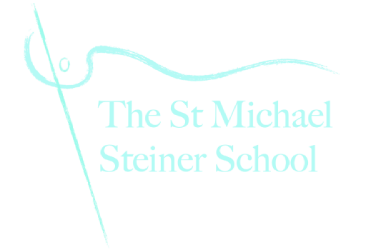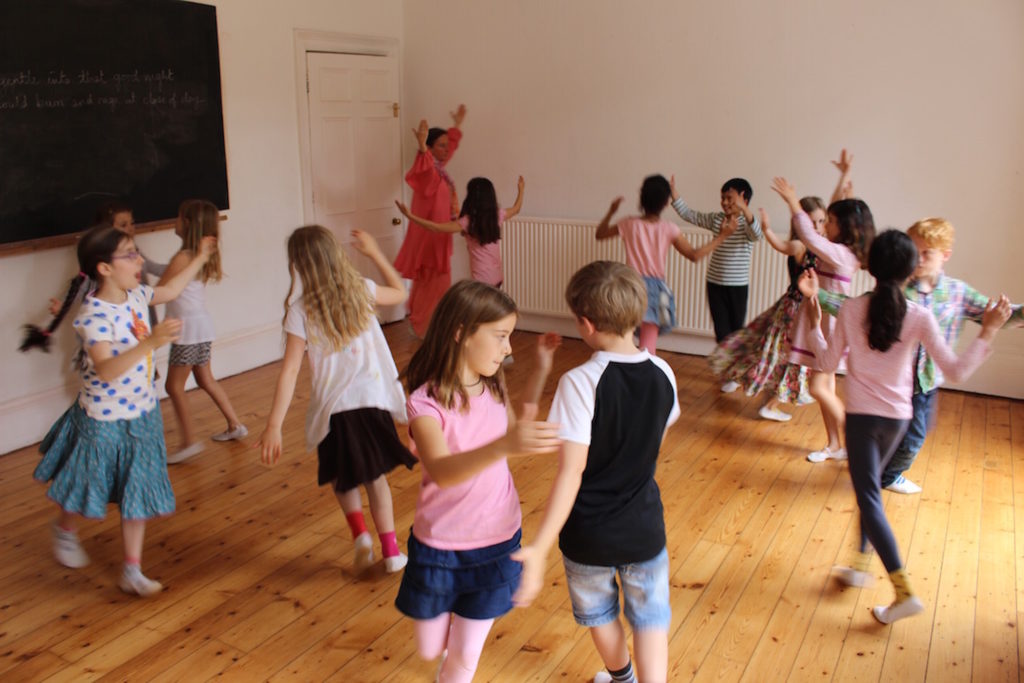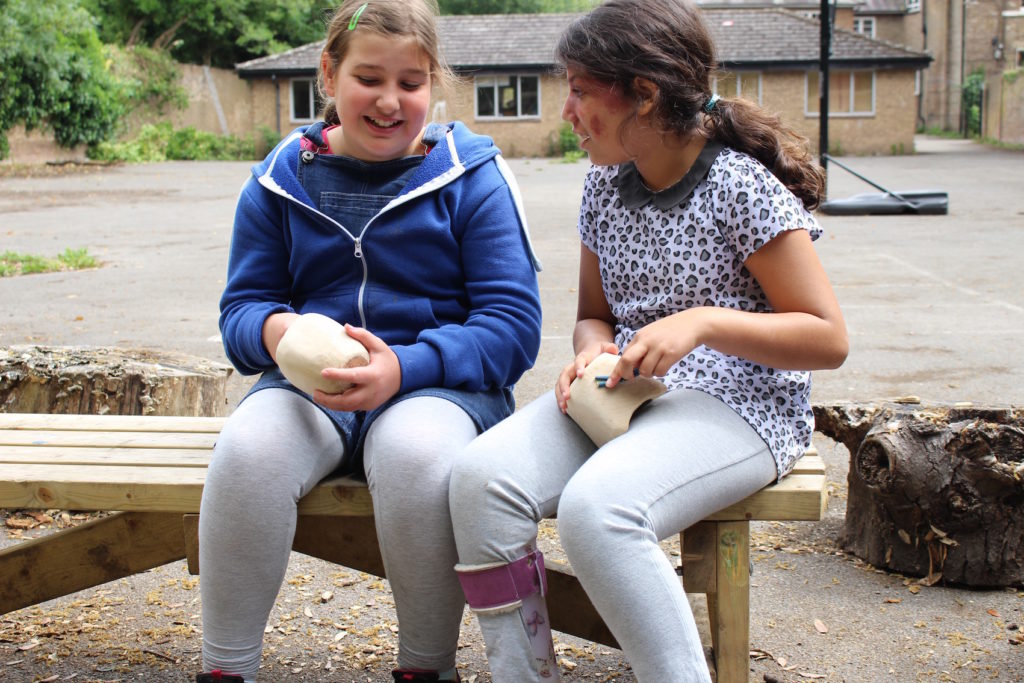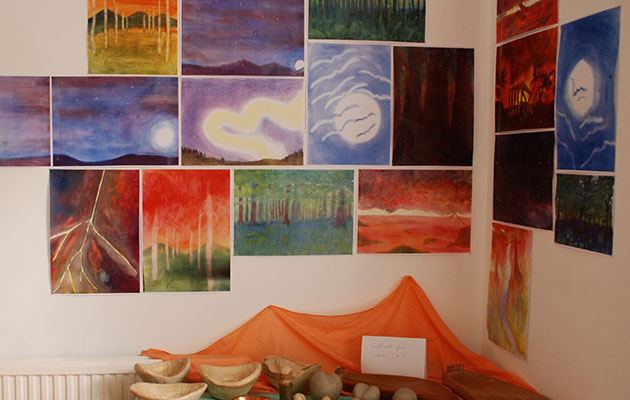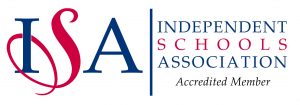Lower & Middle School
The content of the lessons in each class is guided very much by the developmental needs – physical, emotional, cognitive – of the children in the class. The way children see the world and their place in it develops gradually, through identifiable stages, from total immersion to varying degrees of objectivity by the time they reach adulthood.
If the content of the curriculum, and the method of teaching, can be aligned with the characteristics of each stage, then a wonderful symbiosis is created whereby the lesson touches on the deep concerns of the child and arouses his/her interest; and, because s/he can relate personally to it, the child is able to understand and take in the content of what is being taught.
Sections on classes below are written by various teachers, who describe and explain their own approaches and lesson content, as examples of what can be done in each class.
For more detail about the topics and lessons listed, see the Lower & Middle School Curriculum Directory.
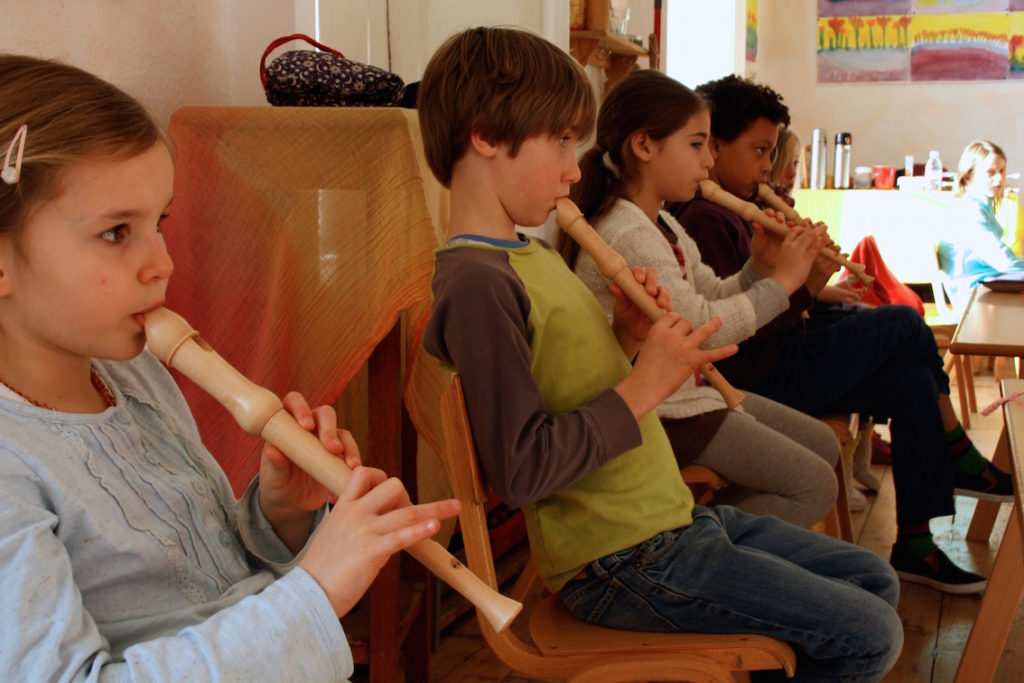
CLASS 1
In this year the children make the important transition from kindergarten to school where they begin formal learning. There is a general mood of dreamy wholeness, with more broad awareness than focused concentration, where they experience themselves and the world as one. The sense of oneness gradually transforms as they begin to discover themselves as unique beings. Much learning is done through practical activity and imitation. During the first year, the aim is to cultivate in the child the imagination, the ability to create vivid inner pictures, a reverence for nature, care for the environment, respect for others, and interest in the world.
Lesson topics and activities in Class 1 include: form drawing, numbers, language and literacy, home surroundings, fairy tales and folk tales, drawing, painting, modelling, eurythmy, handwork, outdoor activities, games, recitation, singing and wooden flute playing. For more detail about the topics and lessons listed, see the Lower & Middle School Curriculum Directory.
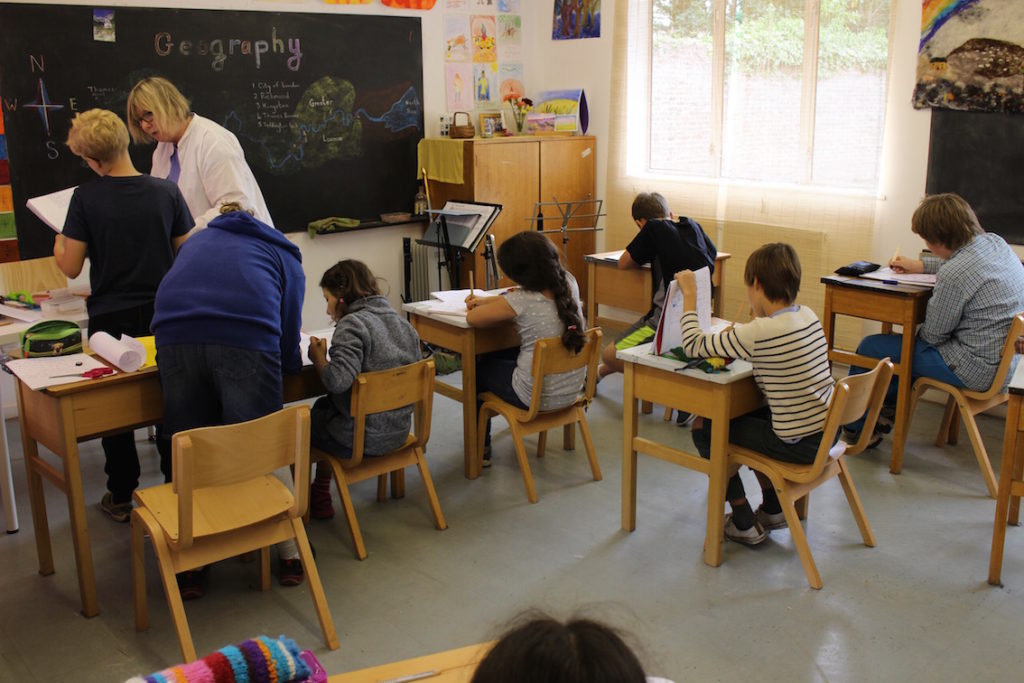
CLASS 2
After their first year of formal education, the children in Class 2 visibly grow and change, both outwardly and inwardly. Their school, their classmates, their teacher, are all very familiar now; they become more confident. In comparison with the relative harmony of Class I, the children are more talkative, louder and more cheeky; they push boundaries more than before. The authority of the teacher remains very important; whereas Class I children usually welcome the teacher’s authority without question, in Class 2 they are more awake and begin to notice and question things. Slowly, through the course of this year and the next, the impulse to just follow – to imitate – will be replaced by the growing wish for independence. This challenging behaviour signals the beginning of that process, which will lead them eventually to become free thinking, empathetic, responsible adults.
Lesson topics and activities in Class 2 include: form drawing, numbers, language and literacy, home surroundings, stories of saints and fables, local folk tales and legends, drawing, painting, modelling, eurythmy, handwork, outdoor activities, games, recitation, singing and wooden flute playing. For more detail about the topics and lessons listed, see the Lower & Middle School Curriculum Directory.
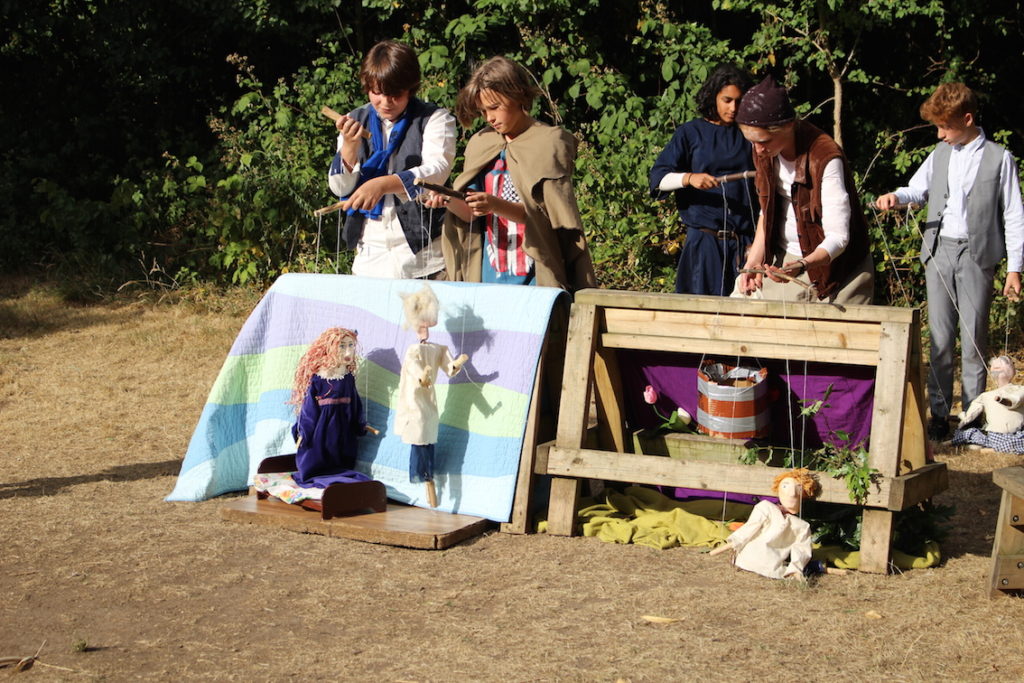
CLASS 3
One can imagine the children of classes one and two still existing somewhat ‘in the clouds’ – they have a dreamlike consciousness, compared with older children and adults, and do not sharply distinguish the separation between themselves and the world around them.
In class three, and on into class four, the child begins to wake up and become more conscious of himself as existing as a ‘self’ which is separate from the world. This can sometimes be an unsettling experience for the children as they feel themselves to be losing the magic of early childhood. They may have doubts and anxieties which they might not be able to clearly express, and it is important that the adult world around them works to remain for them a loving and positive picture of authority in which they can place their trust.
Whilst this ‘crossing of the Rubicon’, as Rudolf Steiner called it, can be a difficult experience for the children, it is also of course a necessary and important step towards eventually becoming a free and independent human being.
The curriculum for class three works to strengthen the children as they step out of the clouds and on to the earth. In the stories of the Old Testament the children experience in grand pictures an echo of their own journey – they too are experiencing a little fall from paradise like Adam and Eve, and they see that as the Israelites followed Moses into the loneliness of the desert, they drew strength from their absolute trust in the guidance of the authority above them.
The children will now test us more and more, but they need us more than ever to remain their strong guides, knowing what is right for them; only as adolescents do they begin to develop the necessary capacities for true independent judgement.
Lesson topics and activities in Class 3 include: form drawing, numbers, language and literacy, farming, building, drawing, painting, modelling, eurythmy, handwork, outdoor curriculum, games, and music. For more detail about the topics and lessons listed, see the Lower & Middle School Curriculum Directory.
CLASS 4
The successive school years in Steiner education can be seen as a process of breathing: breathing in one year to breathe out the next year. Growth and learning does not happen in a straight line. A new development in a child’s maturing soul is marked by a period of challenge or even turmoil followed by a steadier time in which the child enjoys and demonstrates newly acquired capacities or a new view of the world, before the next wave arrives and a new challenge presents itself. Children go through this individually and as a class.
In Class 4, the children develop strong likes and dislikes and become more consciously interested in each other and their similarities and differences. They also become much more interested in the world. We hear many more pop songs being sung, or current events being discussed. The children are now really aware of everything going on around them. They take in the world at this age very intensely and are sensitive to the adult world surrounding them and project this back out without much of a filter.
Lesson topics and activities in Class 4 include: form drawing, numbers, language and literacy, Norse mythology, local geography, comparison of animals, drawing, painting, modelling, eurythmy, handwork, outdoor curriculum, games, and music. For more detail about the topics and lessons listed, see the Lower & Middle School Curriculum Directory.
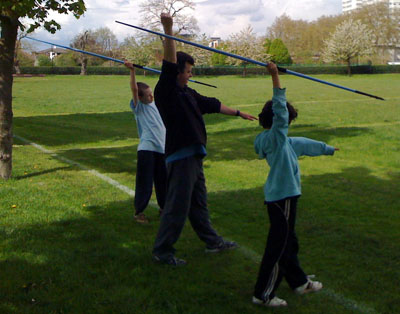
CLASS 5
In Classes 1 and 2, history, geography and science were the various aspects of the Home Surroundings Main Lesson, woven together, intertwined and very close to home; a reflection of a world in which the children were still completely immersed. As they grow, they slowly come out of that world and develop an expanding picture of it; by Class 3, they can look back at the past and imagine the future; they can measure things both outwardly and inwardly; by Class 5 they can begin to draw their own conclusions and notice for themselves how things relate to each other. The ‘oneness’ of the world is becoming something they can observe more and more clearly. This change in their consciousness is mirrored in the curriculum, which becomes more differentiated as they develop the capacity to look more closely at things, but which remains a cohesive whole.
Much of what comes to the children through the media is made up of fragmented and disjointed pieces of information that give a confused impression of the world as a place made up of lots of isolated units – like lego. In addition to this, little consideration is given in education to whether what they are being taught is relevant to the children’s age or stage of development; when they are given information with which they can’t make an inner connection, they can’t make any sense of it and they can’t do anything with it except remember it. The gradual, development-related expansion and differentiation of the curriculum is one of the most important aspects of Steiner Waldorf education for modern children.
Lessons topics and activities in Class 5 include: maths, language arts, mythology and history of ancient civilisations, geography, botany, geometry, drawing, painting, modelling, eurythmy, handwork, outdoor curriculum, games, and music. For more detail about the topics and lessons listed, see the Lower & Middle School Curriculum Directory.
CLASS 6
The twelfth year of a child’s life is a kind of limbo; he is no longer really a child, but he is not yet a teenager, and adulthood is still a long way off. After the challenge of the tenth year, comes the struggle to establish some balance and order, which is more or less achieved during Class 5. Then comes puberty, bringing another onslaught of emotions and physical changes that are difficult to deal with, both for the children themselves and the adults around them. What they have learned from their earlier experience is that the situation needs to be controlled, so, in Class 6, this is their response. But, as with everything at this age, it is somewhat heavy-handed and naïve.
During the twelfth year, the faculties of judgement and objectivity develop as a counter-balance to the emotional turmoil of adolescence, and we can look with clarity at the physical world. In Class 6, we do this through Physics, Geometry and drawing from observation. We also consider the different ways in which people have dealt with the world, worked with it, changed it and thought about it through History, Geography, Art, Literature, Maths. These examples and experiences model for the children how the world can be interpreted and the many ways in which it is possible to enter into life.
Lesson topics and activities in Class 6 include: maths, language arts, Roman and Medieval history, European geography, physics, astronomy, mineralogy, geometry, drawing, painting, crafts, eurythmy, handwork, outdoor curriculum, games, and music. For more detail about the topics and lessons listed, see the Lower & Middle School Curriculum Directory.
CLASS 7
‘Discovery’ is a strong, central theme in Class 7. It runs through the year as we examine the goings-on inside our own bodies, the chemical processes at work in everyday substances and phenomena, and the origins of things we take for granted, and emerges explicitly as we follow the Portuguese and Spanish explorers of the so-called ‘Great Age of Discovery’, to Africa and America.
Generally, this year we work on developing the students’ independence in thinking and in their work and behaviour. They have more freedom in many ways, but also more guidance in how to make the right choices. For example, they are asked to include their own views in their writing, and to pick out aspects that appeal to them from what they heard or read, but only after we have had a comprehensive class discussion, so that they have a richer and more rounded picture.
Lesson topics and activities in Class 7 include: maths, English, Medieval and Renaissance history, geography of the Americas, physics, chemistry, physiology, astronomy, mineralogy, geometry, drawing, painting, crafts, eurythmy, handwork, outdoor curriculum, games, and music. For more detail about the topics and lessons listed, see the Lower & Middle School Curriculum Directory.

CLASS 8
Class 8 is the culmination of the ‘Class Teacher years’ and in the subjects and topics that are taught, there is a kind of completion, on one level, of a survey of the world that began in Class 1. In their fourteenth year, the children/students have learned enough about the world to be able to orientate themselves in it – to begin to think about their place in it – even to live independently, if necessary. They understand, at a basic level, how things work.
Lesson topics and activities in Class 8 include: maths, English, Modern history, World geography, physics, chemistry, anatomy, geometry, drawing, painting, crafts, eurythmy, handwork, outdoor curriculum, games, and music. For more detail about the topics and lessons listed, see the Lower & Middle School Curriculum Directory.
